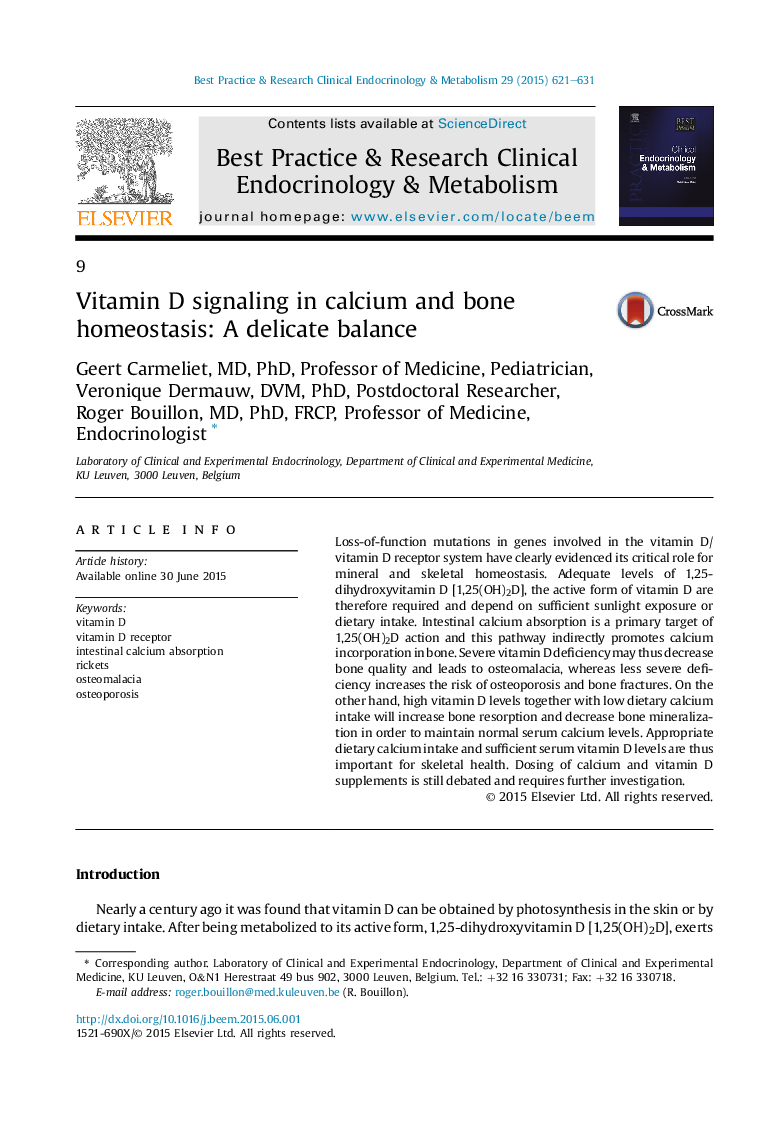| Article ID | Journal | Published Year | Pages | File Type |
|---|---|---|---|---|
| 5896487 | Best Practice & Research Clinical Endocrinology & Metabolism | 2015 | 11 Pages |
Loss-of-function mutations in genes involved in the vitamin D/vitamin D receptor system have clearly evidenced its critical role for mineral and skeletal homeostasis. Adequate levels of 1,25-dihydroxyvitamin D [1,25(OH)2D], the active form of vitamin D are therefore required and depend on sufficient sunlight exposure or dietary intake. Intestinal calcium absorption is a primary target of 1,25(OH)2D action and this pathway indirectly promotes calcium incorporation in bone. Severe vitamin D deficiency may thus decrease bone quality and leads to osteomalacia, whereas less severe deficiency increases the risk of osteoporosis and bone fractures. On the other hand, high vitamin D levels together with low dietary calcium intake will increase bone resorption and decrease bone mineralization in order to maintain normal serum calcium levels. Appropriate dietary calcium intake and sufficient serum vitamin D levels are thus important for skeletal health. Dosing of calcium and vitamin D supplements is still debated and requires further investigation.
